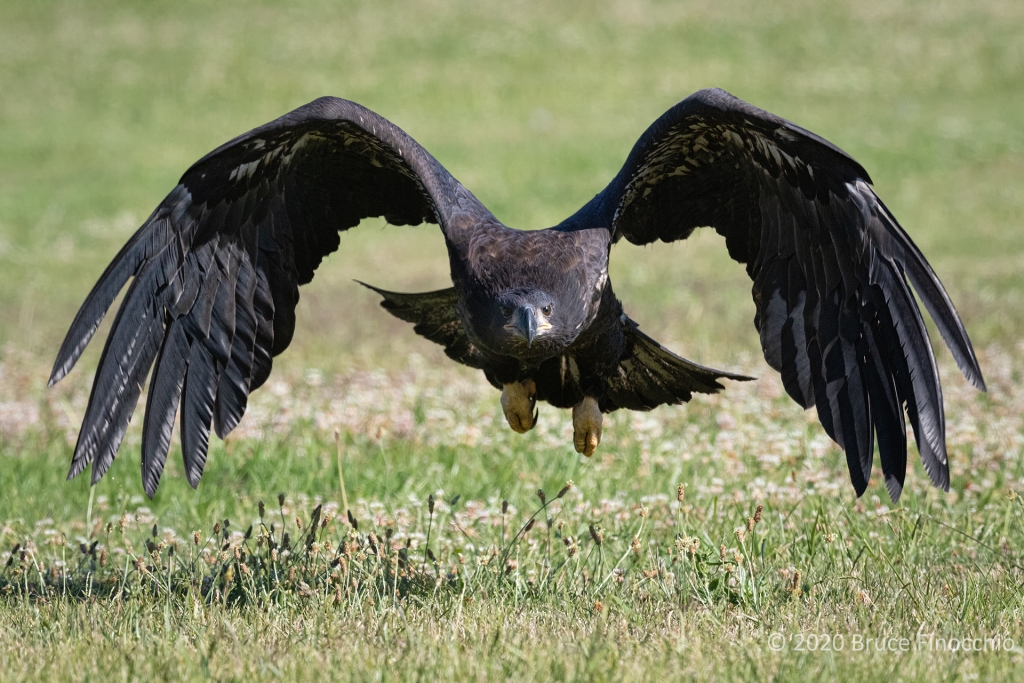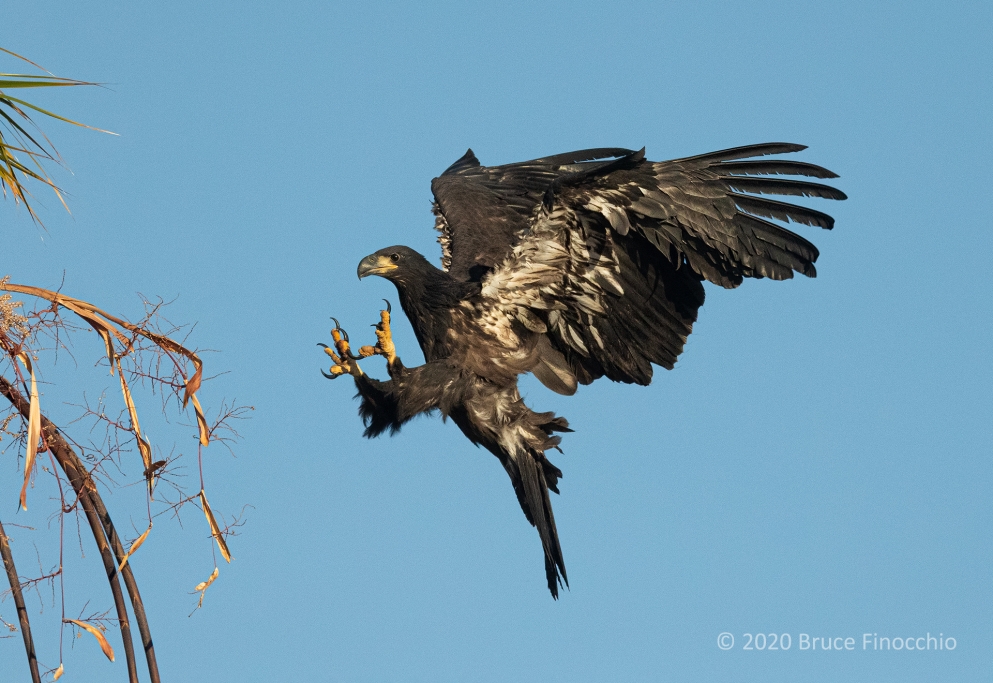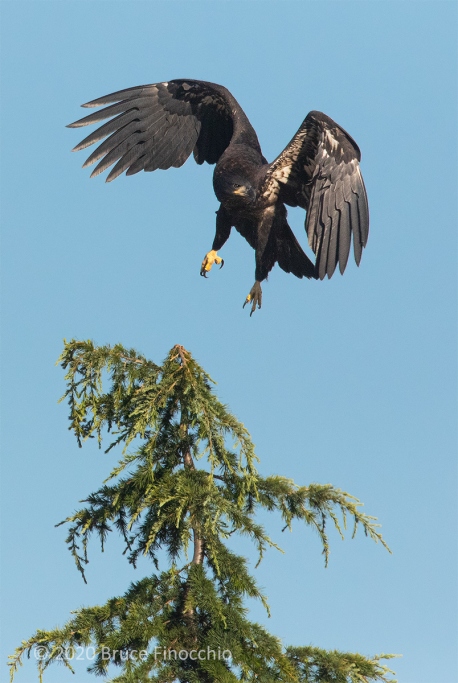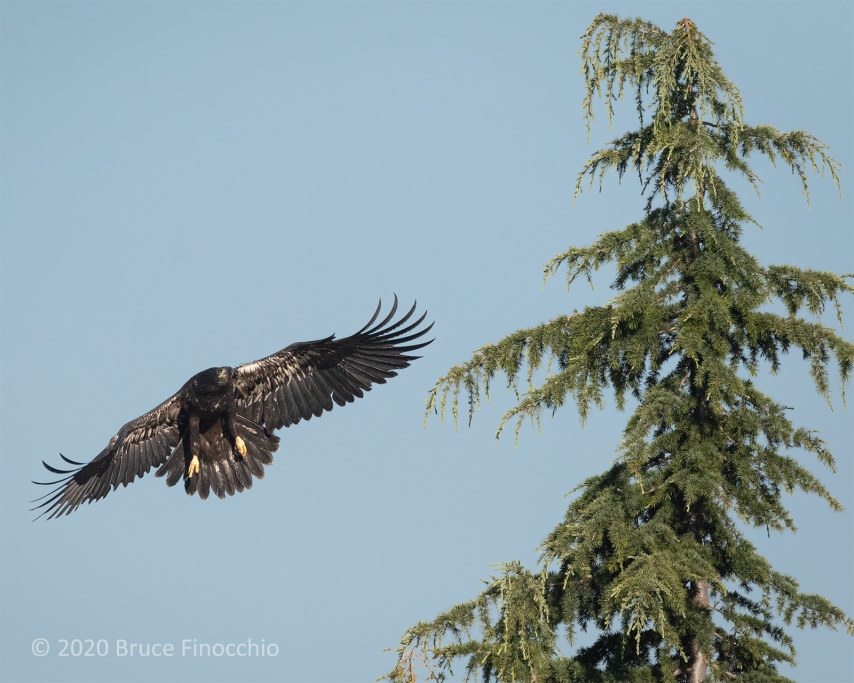Juvenile Bald Eagle Scratching Chin With Talon

Goal:
What’s the back story? What is the lesson learned?
For the past five years, a pair of Bald Eagles have nested in the Redwood Tree in front of Curtner Elementary School in Milpitas, California. At the school, there are three large Redwood Trees. The tall middle one is the nest three-quarters the way up. Over the years, they have built a large platform of sticks a top of some of the side branches.
First, it was Junior. Then, as the pandemic hit came Covid and Corona. Last year, they raised Pfizer, and this year this juvenile bald eagle is called Booster. There is a Facebook page dedicated to these eagles. Photographers come from all parts of California to photograph these eaglets.
Back of the school is some water treatment ponds that attract Black-crowned Night Herons, Snowy Egrets, Canadian Gooses, and an assortment of ducks. Northern Rough-winged Swallows also breed around these ponds. Near the school side is a boundary where two levies separate the treatment ponds from the school’s sports fields. Between the levy is a canal, a marshy wetlands area, and probably a former river that drains into San Francisco Bay.
A bridge crosses over the canal and goes to the levy on the other side, providing access to the water treatment ponds. There are several eucalyptus trees around the ponds, so the eagles favorite these trees, so they can watch the activity and occasionally take a fish out of the pond. They also hunt California Ground Squirrels on the levies around this area.
Now that she fledged and is flying, Booster spends a lot of time around these settlement ponds. One morning, I was across the bridge photographing Booster down by the pond’s edge. When Booster took off, she landed on the bridge. Then, this curious and adventurous eagle hopped up and flew to the bridge railing.
Here I was blocked from crossing back over the bridge and, most notably, on the wrong side of light. I was stuck on the ugly backlit side. There are fences along the levies, and the bridge is the only direct way across. A photographer on the same side as me took off and circled the ponds into the neighborhood. She went around the ball fields and the tennis courts at the back of the elementary school. She eventually returned to the bridge’s other side and began photographing Booster with the nice 9:00 am light behind her.
I stayed and tried to make a good outcome from a bad lighting situation. From my first position, I had some green deciduous leaves reflecting light off their waxy surface. With my 600 mm lens, I had these ugly shining green and white unfocused rings in my background. I didn’t want to put the blue sky behind the eagle if possible. Then, I noticed next to these green leave deciduous trees were a group of some fir or pine. I moved to my left a few steps, and these ugly green and white rings disappeared. My background was now a smooth forest green, not harsh, and with no distractions.
Now I was ready. Booster didn’t disappoint. She started scratching its chin with her mighty talon. I captured the behavior that was my goal.
Booster rolled back its nictating membrane to protect its eye and sight. This image captured the movement of the nictating membrane covering the eye. However, the nictating membrane wasn’t opaque as you usually see it.
I took hundreds of images as Booster was scratching her eye, with many horizontal frames and some verticals. I also used some exposure compensation to tone down some bright rim light from the backlight.
I created an exciting nature story image by standing put and making the best of a bad lighting situation. The moral of my story is that my friend did not see Booster scratching her chin with her talon because by the time she got to the other side of the bridge. Booster had stopped this activity; she missed this behavior. My patience and perseverance paid off.
Equipment:
Canon 5D camera body, with a 600 mm f4.0 IS lens and a 1.4x III teleconverter, at ISO 2500, 1/1600 sec at f5.6, Evaluative Metering, Aperture Priority, on a 1325G Gitzo trip using a Wimberley Tripod II
Technical Information:
Using the above tripod, selected Canon’s CR3 raw file format, using Canon’s animal eye-tracking autofocusing. And with Case #2, the autofocus tracking sensitivity is set at zero, with Accel./Decel set to minus one.
Processing:
I selected the 5 x 4 framing to eliminate extra space on the left side of the image and better balance the subject within the frame. I used digital dodging techniques to reduce the bright rim highlight areas on the head feathers and the talon’s bright edges. I used my standard Topaz DeNoise application set on the motion blur mode; applied one of Topaz sharpening modes on a different Photoshop layer, masking the background or the subject as appropriate.


















